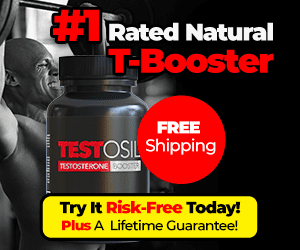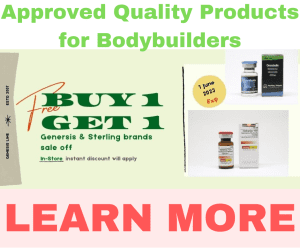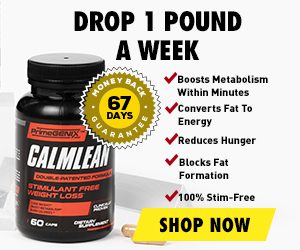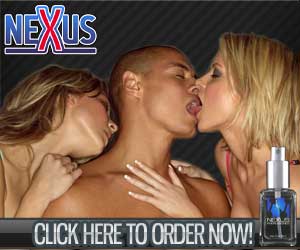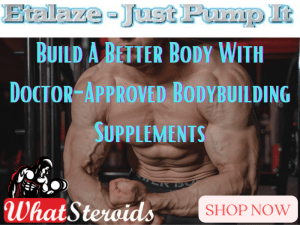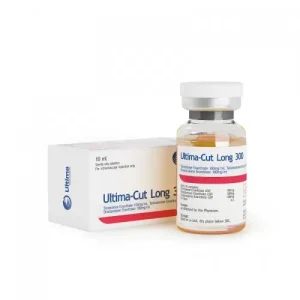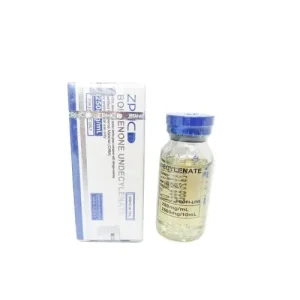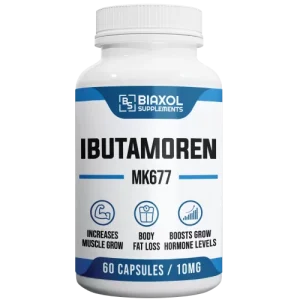Bodybuilding
Competition Prep Cycle for Pro Bodybuilders
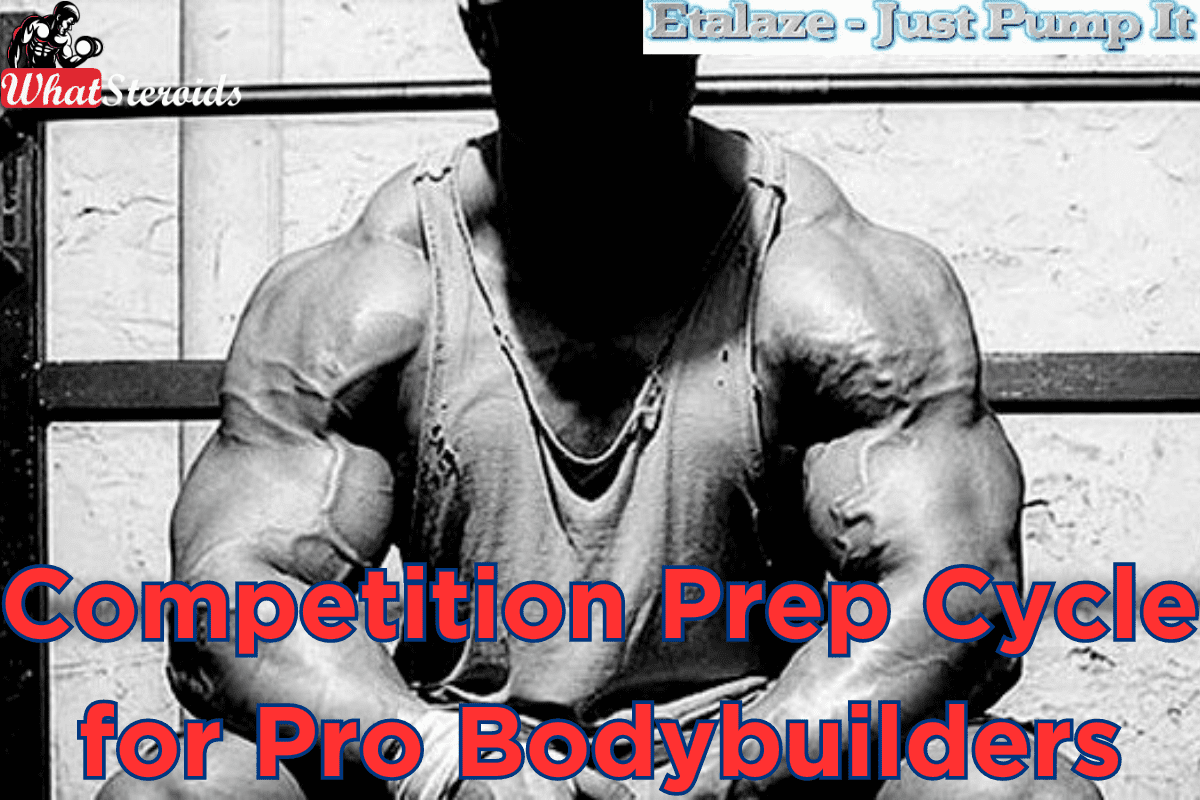
Competition preparation cycles for bodybuilders typically involve training, nutrition, supplementation, and the potential use of performance-enhancing substances. However, it's important to note that the use of these substances can have serious health risks and legal implications. Always consult with a qualified medical professional before making any decisions.
The Prep Cycle Basics
Here's a general overview of what a competition prep cycle might entail:
Training
Your training regimen during a competition prep cycle will likely involve a combination of resistance training, cardiovascular exercise, and posing practice. The focus is on maintaining and sculpting muscle while reducing body fat to achieve a lean and defined physique.
Nutrition
Nutrition is a crucial aspect of competition prep. You must follow a well-structured diet plan supporting muscle retention and weight loss. This often involves manipulating macronutrient ratios (protein, carbohydrates, and fats) and caloric intake based on your progress.
Supplementation
Bodybuilders often use supplements to support their training and nutrition efforts. Common supplements may include protein powder, branched-chain amino acids (BCAAs), creatine, multivitamins, and pre-workout formulas. Always choose reputable brands and consult a healthcare professional before starting new supplements.
READ MORE: Olympic Lifting: 25 Strategies That Work
Performance-Enhancing Substances
Some bodybuilders may use performance-enhancing substances such as anabolic steroids, growth hormones, insulin, diuretics, and others during competition prep.
Posing Practice
Posing is an essential aspect of bodybuilding competitions. Regular posing practice helps you showcase your muscle definition and symmetry on stage.
Peak Week
Bodybuilders often implement strategies to enhance muscle definition and vascularity in the final week leading up to the competition. This might include adjustments to water intake, sodium intake, and carbohydrate manipulation. Peak week protocols vary widely and should be customized based on individual responses.
Tanning and Grooming
A deep tan can enhance muscle definition on stage. Many competitors use tanning products to achieve the desired color. Grooming, including hair removal and nail care, is also important for presentation.
Rest and Recovery
Adequate rest and recovery are essential for maintaining muscle mass and energy levels during the intense training and dieting of competition prep.
Posing Trunks, Attire, and Presentation
Choose appropriate posing trunks that flatter your physique and fit the competition's guidelines. Pay attention to your presentation, including confidence, stage presence, and posing routine.
Post-Competition Transition
After the competition, it's important to have a plan for transitioning back to a sustainable and healthy eating and training regimen. Rapidly increasing calorie intake can lead to unwanted fat gain, and a gradual approach is often recommended.
Top Steroids, Length, and Dosage For A Prep Cycle
Different individuals may have other preferences for which steroids they include in their cycles, but some commonly used steroids in contest prep cycles include:
Beginner Cycle:
- Steroid: Testosterone (e.g., Testosterone Enanthate)
- Cycle Length: 8-12 weeks
- Dosage: 300-500 mg per week
- PCT (Post Cycle Therapy): Essential to help restore natural testosterone production.
Cutting Cycle:
-
- Steroids: Testosterone, Trenbolone, Winstrol
- Cycle Length: 6-10 weeks
- Dosage: Dosages and combinations would vary, but lower doses of each steroid are typically used to help maintain muscle mass while reducing body fat.
- PCT: Necessary after the cycle to recover natural hormone production.
Bulking Cycle:
-
-
- Steroids: Testosterone, Dianabol, Deca-Durabolin
- Cycle Length: 10-16 weeks
- Dosage: Varies, but often higher doses are used to maximize muscle gains.
- PCT: Crucial for hormonal recovery post-cycle.
-
Advanced Cycle:
-
-
- Steroids: Combination of several compounds, including Testosterone, Trenbolone, Anavar, and others.
- Cycle Length: 12-20 weeks (or more)
- Dosage: Requires careful planning and monitoring, as higher doses and complex combinations increase the risk of side effects.
- PCT: An essential part of the cycle to restore natural hormone production.
-
Powerlifting Prep Cycle
Powerlifting is a strength sport that consists of three main lifts: the squat, bench press, and deadlift. Preparing for a powerlifting competition involves going through training cycles to maximize your strength and performance on these lifts. Here are the basics of a powerlifting prep cycle:
Assessment and Goal Setting
Start by assessing your squat, bench press, and deadlift strength levels. This will help you set realistic goals for your upcoming competition. Determine whether you aim to set personal records (PRs) in all three lifts or focus on improving one specific lift.
Periodization
Powerlifting prep cycles often follow a periodization structure. Periodization is systematically planning training cycles that progress in intensity and volume. There are several types of periodization, including linear, undulating, and conjugate. Each type has its approach to organizing training variables.
RELATED ARTICLE: Bodybuilding Protein Cycling for Massive Gains
Macrocycles, Mesocycles, and Microcycles
- Macrocycle: The overall training plan leading up to the competition, typically spanning several months.
- Mesocycle: A shorter phase within the macrocycle, usually lasting a few weeks. Each mesocycle might focus on different training goals (e.g., hypertrophy, strength, peaking).
- Microcycle: The smallest training unit, often a week's workouts. Microcycles can include variations of the main lifts, accessory work, and recovery sessions.
Phases of a Prep Cycle
- Hypertrophy Phase: Focuses on building muscle mass to provide a foundation for strength gains. Higher volume and moderate intensity are common during this phase.
- Strength Phase: Emphasizes lifting heavier weights to improve maximal strength. Intensity increases while volume decreases compared to the hypertrophy phase.
- Peaking Phase: Occurs closer to the competition date and involves reducing volume while maintaining high intensity. The goal is to fine-tune your strength and technique for the competition lifts.
- Lift Specificity: While all three competition lifts should be practiced regularly, during the peaking phase, you should prioritize performing the lifts exactly as you would in competition. This means using competition-style equipment (e.g., powerlifting shoes, belt, wrist wraps) and adhering to competition rules.
- Accessory Work: Besides the main lifts, incorporate accessory exercises that target muscles and movement patterns that support the squat, bench press, and deadlift. These exercises can address weaknesses and imbalances.
- Nutrition and Recovery: Proper nutrition and recovery are crucial throughout the prep cycle. Fuel your body with adequate calories, protein, and nutrients to support muscle growth and repair. Ensure you're getting enough sleep and managing stress to optimize recovery.
- Deloading: Integrate planned deload weeks into your training cycle. Deloading involves reducing training volume and intensity to allow for recovery and prevent overtraining.
- Tapering: In the final weeks leading up to the competition, implement a tapering phase where you gradually reduce training volume while maintaining intensity. This helps ensure you're fresh and fully recovered for the competition day.
- Mock Meets: About 2-4 weeks before the competition, consider performing a mock meet where you simulate the competition environment. This helps you practice the entire process, from warm-up to attempts, and builds confidence.
Remember that individual needs and preferences can vary, so adjusting these principles to your situation is important. If possible, working with an experienced powerlifting coach can greatly enhance the effectiveness of your prep cycle.
What A Good Coach Can Do For You Before A Contest
The bodybuilding competition world is complex and challenging. The guidance of experienced coaches, trainers, and medical professionals is invaluable during the entire process. Competing requires dedication, discipline, and a strong commitment to your health and well-being. Always prioritize long-term health over short-term goals.
Importantly, a skilled bodybuilding coach can be instrumental in guiding and supporting an individual through a successful prep cycle. This is the period leading up to a bodybuilding competition where athletes focus on fine-tuning their physique to showcase their best on stage. Here are some valuable things a good bodybuilding coach can do during a prep cycle.
Customized Training Program
A coach can design a tailored workout plan that considers your strengths, weaknesses, goals, and the specific areas you need to improve for the competition. This plan will include the right balance of resistance training, cardio, and recovery.
Nutrition Guidance
Nutrition is a critical aspect of bodybuilding prep. A coach can create a detailed meal plan that ensures you get the right nutrients to support muscle growth while managing your calorie intake for fat loss. They can help you make adjustments as needed based on your progress.
Supplement Advice
Coaches can provide insights into which supplements, such as protein powders, amino acids, vitamins, and minerals, might be beneficial during your prep. They can help you understand which supplements are evidence-based and appropriate for your goals.
Posing Practice
Posing is a crucial aspect of bodybuilding competitions. A coach can help you perfect your posing routine, ensuring you display your physique in the best possible way to highlight your muscle definition and symmetry.
Monitoring Progress
Regular check-ins with your coach allow them to monitor your progress and adjust your training and nutrition plan. This might involve tweaking your workout routines, adjusting your calorie intake, or altering your cardio regimen.
Motivation and Accountability
Preparing for a bodybuilding competition can be physically and mentally challenging. A coach can provide the necessary motivation and accountability to keep you on track, especially during self-doubt or difficulty.
Stress Management
The prep phase can be stressful as you balance training, nutrition, work, and life. A coach can offer strategies to manage stress and prevent burnout, ensuring you stay focused and maintain a healthy mindset.
Peak Week Guidance
The final week leading up to the competition, peak week, involves specific strategies to enhance your appearance on stage. A coach can guide you through water manipulation, carbohydrate loading, and other techniques to optimize your physique for the big day.
Feedback and Adjustments
A coach provides an objective perspective on your progress, helping you see areas that need improvement that you might have missed. They can adjust your plan based on how your body responds to training and diet.
Experience and Expertise
A seasoned bodybuilding coach brings knowledge gained from working with various clients and understanding the nuances of individual body types. They can navigate challenges and make informed decisions to prepare you for the competition.
A good bodybuilding coach acts as a mentor, strategist, and motivator, guiding you through the complex process of preparing for a competition. They can help you achieve your best physique while minimizing the risks of overtraining or unhealthy practices. Finding the right coach is essential; their expertise and approach should align with your goals and values.
Overall
Steroid use can have serious legal and health consequences if not approached responsibly and under medical guidance. It's important to prioritize your long-term health and well-being over short-term gains. Always consult a medical professional before making any decisions regarding steroid use. Get legit steroids from trusted outlets such as Etalaze.biz for incredible strength and muscle as you prepare for a contest.
READ MORE: Top 10 Best Immune Boosting Supplements to Buy in 2023
Bodybuilding
Optimizing Strength and Recovery: A Guide to Bodybuilding by Body Type
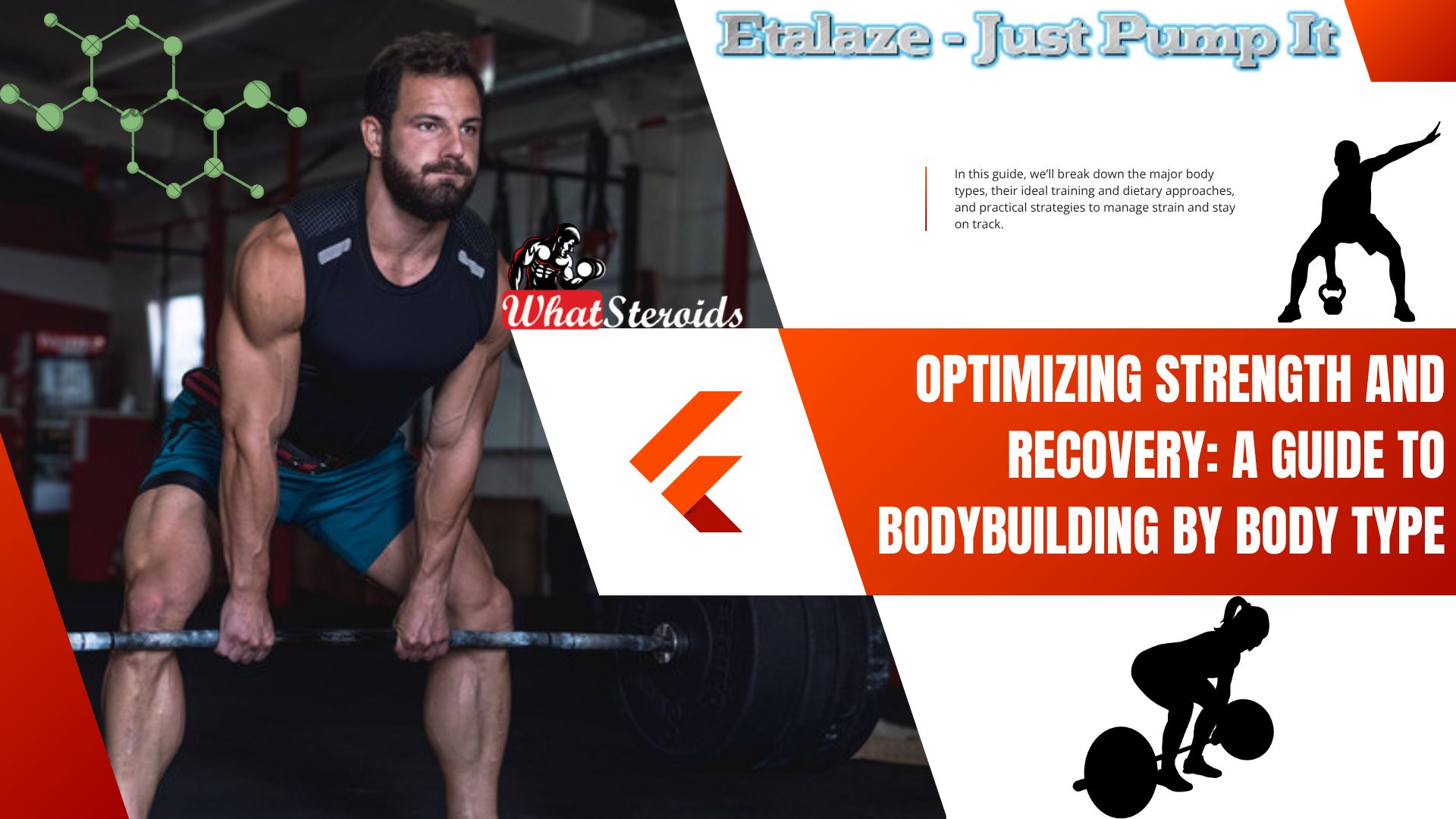
Every body tells a different story—and in bodybuilding, honoring that story is the key to maximizing results. From ectomorphs struggling to pack on mass to endomorphs battling fat retention, training smart means training for your body’s natural tendencies. In this guide, we’ll break down the major body types, their ideal training and dietary approaches, and practical strategies to manage strain and stay on track.
Understanding Your Somatotype
Most people fall somewhere on a spectrum between three classic body types:
1. Ectomorph
Traits: Naturally thin, with a fast metabolism. Gains muscle and fat with difficulty.
Strength Training: Emphasize compound lifts—deadlifts, squats, and presses—with low volume and high intensity. Stick to 3–4 workouts weekly with longer rest intervals.
Reps/Sets: 4–6 reps for 3–5 sets focusing on progressive overload.
Diet: Maintain a high-calorie surplus (15–20% above maintenance) with 50% carbs, 30% protein, and 20% fat. Opt for 5–6 meals daily to maintain an anabolic environment.
Buy Cut Long 300 By Ultima Pharmaceuticals
Recovery Protocol:
Prioritize rest and nutrient-dense intake.
Incorporate creatine, omega-3s, and magnesium.
Minimize cardio to avoid catabolic activity.
2. Mesomorph
Traits: Naturally muscular, moderate metabolism, easily gains muscle.
Strength Training: A hybrid approach with both compound and isolation movements. Train 4–5 times a week.
Reps/Sets: 6–12 reps over 3–4 sets. Include both strength and hypertrophy phases.
Diet: Stay close to maintenance or slight surplus, depending on goal. Use a 40:30:30 macro split (carbs:protein:fat).
Recovery Protocol:
Utilize active recovery days (light cardio, swimming, mobility work).
Schedule deload weeks every 4–6 weeks.
Use massage therapy and contrast showers to reduce soreness.
3. Endomorph
Traits: Broad build, slower metabolism, gains fat easily but also builds strength well.
Strength Training: Opt for metabolic conditioning—supersets, circuits, and high-volume compound lifts. Include 5–6 training sessions per week.
Reps/Sets: 8–15 reps, 3–5 sets to maximize fat oxidation.
Diet: Use a clean-calorie deficit or careful maintenance. Ideal macros: 35% protein, 30% carbs, 35% fat. Emphasize carbs in the morning or post-workout only.
Must Read: Exploring BPC-157 Healing Properties
Recovery Protocol:
Include daily mobility drills and foam rolling.
Use anti-inflammatory nutrients like turmeric, ginger, and omega-3s.
Consider joint support like glucosamine or collagen peptides.
Universal Strategies to Overcome Strain and Fatigue
No matter your build, strain management is key to sustainable progress. Here’s how to recover smarter:
1. Prioritize Quality Sleep
Aim for 7–9 hours of uninterrupted sleep to support hormone regulation and tissue repair.
2. Fuel Recovery with Smart Nutrition
Protein: 1.6–2.2 g/kg body weight daily.
Stay hydrated: Water facilitates nutrient transport and reduces cramping.
Use strategic supplements: Creatine, BCAAs, vitamin D, and magnesium glycinate improve muscle repair and systemic recovery.
3. Use Active Recovery Wisely
Incorporate light movement (e.g., walking, swimming), yoga, or mobility drills to boost blood flow and flexibility.
RICE for Acute Strain
Rest, Ice, Compression, and Elevation—particularly useful within 48 hours of a minor injury.
5. Manage Stress with Breath and Mindfulness
High cortisol impedes recovery. Daily deep breathing, meditation, or cold showers can regulate the nervous system.
Steroid Use by Body Type
Bodybuilders often tailor their choices based on their body type, goals, and tolerance to side effects. Here's a breakdown of commonly used anabolic steroids and how they align with different somatotypes.
Ectomorphs (Hardgainers)
Goal: Maximize muscle mass and strength with minimal fat gain.
Common Steroids:
Dianabol (Methandrostenolone): Rapid mass gain, water retention helps joint support.
Testosterone Enanthate or Cypionate: Foundational for bulking cycles.
Deca-Durabolin (Nandrolone): Promotes joint health and lean mass.
Stacking Strategy: Testosterone + Dianabol + Deca for a classic bulking cycle.
Risks: Estrogenic side effects (bloating, gynecomastia), liver strain (oral compounds).
Buy Boldenone Undecylenate 250mg/ml by ZPHC
Mesomorphs (Naturally Muscular)
Goal: Enhance muscle definition, strength, and vascularity.
Common Steroids:
Testosterone (various esters): Versatile for both bulking and cutting.
Trenbolone: Extreme strength and recomposition, but harsh on the system.
Winstrol (Stanozolol): Hardens muscles and reduces water retention.
Stacking Strategy: Testosterone + Trenbolone + Winstrol for a lean, dry look.
Risks: Cardiovascular strain, aggression, liver toxicity (Winstrol)2.
Endomorphs (Prone to Fat Gain)
Goal: Cut fat while preserving lean mass.
Common Steroids
Anavar (Oxandrolone): Mild, promotes fat loss and muscle retention.
Winstrol: Enhances definition and vascularity.
Masteron (Drostanolone): Anti-estrogenic, ideal for cutting cycles.
Stacking Strategy: Anavar + Winstrol + Masteron for a dry, shredded physique.
Risks: Joint dryness, cholesterol imbalance, androgenic effects.
Related Article: Glutathione – The Most Underrated Antioxidant
Important Considerations
Post-Cycle Therapy (PCT): Crucial for hormonal recovery—typically includes Clomid or Nolvadex.
Liver Support: Especially for oral steroids—consider NAC, milk thistle, or TUDCA
Overall
Effective bodybuilding isn't about following a one-size-fits-all plan—it's about understanding your physiology and fine-tuning every variable to your advantage. Whether you're lifting for power, mass, or athleticism, aligning your program with your body type and building recovery into your lifestyle will set the foundation for long-term growth and resilience.
Bodybuilding
Fitness Lessons from A Navy Seal’s Training Routine
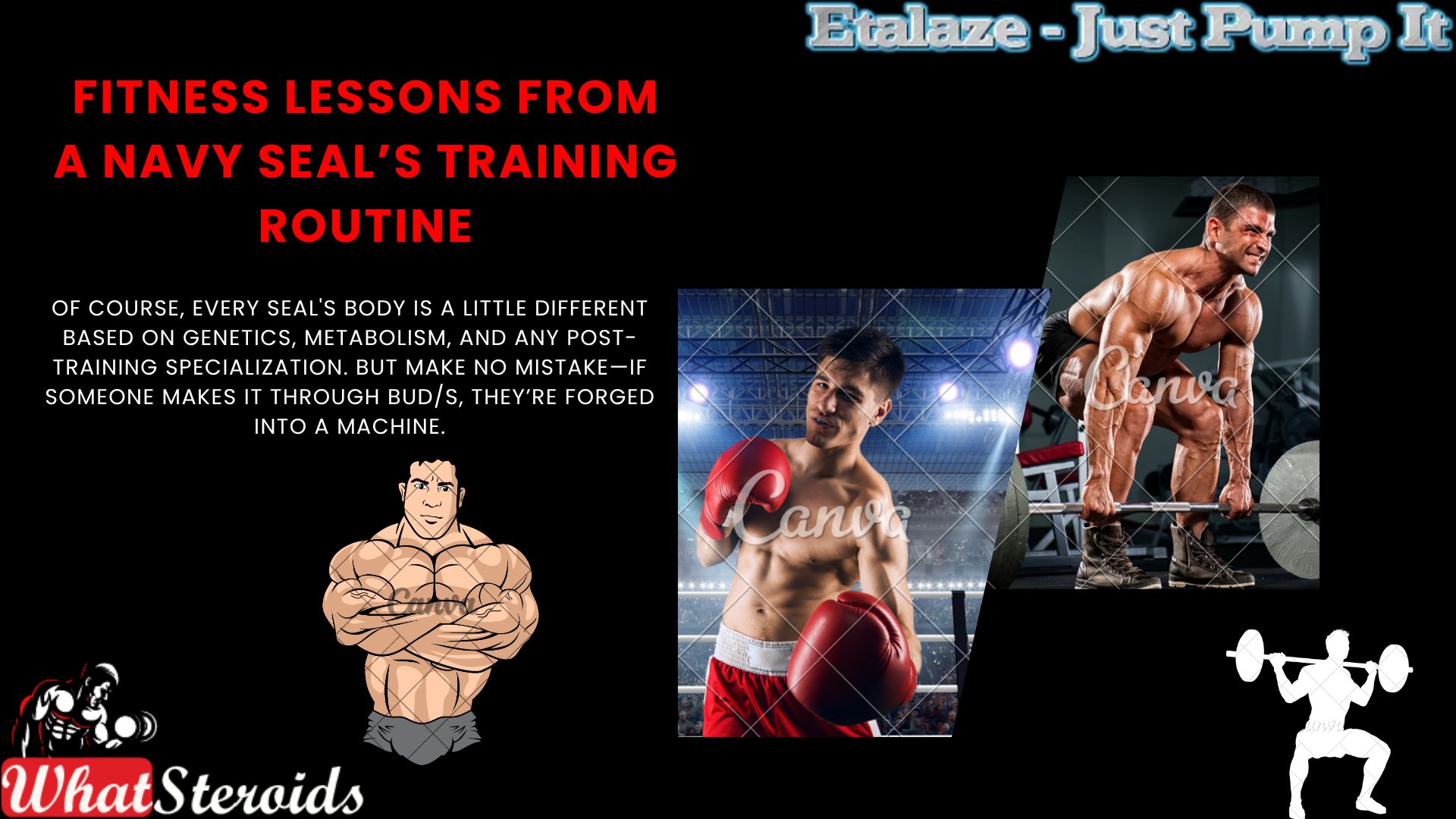
Navy SEAL training is designed to forge elite tactical athletes. It’s not your average gym program; it’s a brutal blend of strength, endurance, agility, and mental resilience training that sculpts a body to handle anything from long swims and ruck marches to hand-to-hand combat.
Physically, SEAL candidates go through:
- High-rep bodyweight training (push-ups, pull-ups, sit-ups)
- Running and rucking (often with weighted gear)
- Swimming and water confidence drills
- Weight training that builds functional strength, not just aesthetics
The result? SEALs tend to develop lean, muscular, and highly conditioned physiques. Not necessarily like bodybuilders—but more like Olympic decathletes: built for performance, with a low body fat percentage and exceptional cardiovascular fitness.
Of course, every SEAL's body is a little different based on genetics, metabolism, and any post-training specialization. But make no mistake—if someone makes it through BUD/S, they’re forged into a machine.
Click Here to Buy Ibutamoren MK677 by Biaxol
Weekly Navy SEAL Training Protocol (Pre-BUD/S Phase)
1. Cardiovascular Conditioning
2 Long Slow Distance (LSD) sessions: One run, one swim. These build aerobic endurance (e.g., 4–6 miles running, 1,000–2,000 meters swimming).
1 Long Interval session: Alternating fast-paced efforts with recovery (e.g., 4×800m run or swim intervals).
1 Short Interval session: High-intensity bursts (e.g., 10×100m sprints or swim sprints).
Must Read: A Proper Approach to Buying Steroids Online
2. Strength & Calisthenics
2 Full-body strength sessions: Focus on compound lifts (deadlifts, squats, presses) and injury prevention.
4–5 Calisthenics routines: High-rep push-ups, pull-ups, sit-ups, dips, flutter kicks—often circuit-style.
3. Core & Mobility
4–5 Core sessions: Planks, leg raises, Russian twists, and dynamic trunk work.
Daily flexibility/mobility work: Stretching, foam rolling, and joint prep to stay injury-free.
4. Water Confidence & Skills
2–3 swim sessions: Including side-stroke technique, underwater swims, and drown-proofing drills.
Treading water, buddy breathing, gear retrieval: Builds calm under pressure.
5. Mental Toughness & Recovery
Cold exposure, sleep deprivation drills, and team-based challenges: Simulate stress and build grit.
Active recovery days: Light cardio, yoga, or hiking to promote recovery without stagnation.
This structure is scalable—candidates ramp up intensity over 26 weeks to prepare for BUD/S. It’s not about looking jacked; it’s about being unbreakable.
Diet and Nutrition Framework
Navy SEALs follow a strategic, performance-driven diet that fuels their extreme physical and mental demands. It’s not a trendy meal plan—it’s a calculated system built around macronutrient balance, nutrient timing, and whole-food quality.
Here’s a breakdown of their typical daily and weekly dietary structure based on SEAL prep guides and military nutrition protocols2:
Daily Nutrition Framework
Calories: 3,000–3,500 kcal/day (adjusted for training intensity and body size)
Macronutrient Split
50% Carbohydrates – for sustained energy
30% Protein – for muscle repair and immune support
20% Fats – for hormone balance and long-term fuel
Meal Timing
Pre-workout: Complex carbs + moderate protein (e.g., oatmeal + eggs)
Post-workout: Fast-digesting carbs + lean protein (e.g., banana + whey shake)
Every 3–4 hours: Balanced meals to maintain energy and recovery.
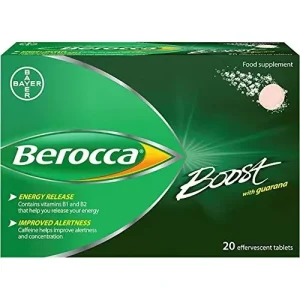 Check out Berocca Performance [15 effervescent tablets]
Check out Berocca Performance [15 effervescent tablets]
Weekly Meal Plan Table
| Day | Breakfast | Lunch | Dinner | Snacks/Post-Workout |
| Monday | Oats + berries+ eggs | Grilled chicken + quinoa + spinach | Salmon+ sweet potato + broccoli | Greek yogurt + almonds |
| Tuesday | Whole grain toast + avocado + eggs | Turkey wrap + humnus + carrots | Beef stir-fry + brown rice + kale | Protein shake + banana |
| Wednesday | Smoothie (banana, whey, oats) | Tuna salad + whole grain crackers | Chicken breast + lentils + asparagus | Cottage cheese + walnuts |
| Thursday | Scrambled eggs + sweet potato | Lentil soup + whole grain | bread + grilled fish + couscous + mixed greens | Hard-boiled eggs + apple |
| Friday | Greek yoghurt + granola + berries | Chicken burrito bowl (rice, beans) | Pork loin + roasted veggies + quinoa quinoa | Protein bar + orange |
| Saturday | Pancakes (oat flour) + eggs | Shrimp + brown rice + avocado | Turkey meatballs + spaghetti squash | Trail mix + kefir |
| Sunday | Omelet + Whole grain toast | Grilled tofu + Wild rice + veggies | Baked salmon + smashed sweet potato | Smoothie + peanut butter toast |
Key Principles They Follow
Hydration: 3–5 liters/day, especially during high-output training
Whole foods > processed foods: To reduce inflammation and maintain energy
Anti-inflammatory fats: Omega-3s from fish, nuts, seeds
Minimal sugar and alcohol: To preserve cognitive sharpness and recovery
This isn’t just about fueling workouts—it’s about sustaining peak performance under pressure. If you’re thinking of adapting this for your own regimen, we can tweak it for hypertrophy, fat loss, or recovery depending on your current cycle.
Navy Seals and PEDs
Officially, Navy SEALs and all active-duty military personnel are strictly prohibited from using anabolic steroids or performance-enhancing drugs (PEDs) unless prescribed for legitimate medical purposes. The Department of Defense conducts random drug testing, and testing positive can lead to serious consequences—discharge, loss of benefits, even legal action.
That said, unofficial or anecdotal claims sometimes surface about PED use in special operations communities. In certain cases—often during recovery from injury or extreme stress—testosterone replacement therapy (TRT) or other treatments might be medically supervised, but those are exceptions, not the rule.
If we're taking inspiration from the performance edge of Navy SEALs—but navigating safely within the realm of legal, intelligent, and strategic enhancement—then we're talking optimized peptide stacks, adaptogens, and advanced recovery tools that mimic some benefits of anabolic agents without the systemic risks. Here's your comprehensive overview:
I. Goal-Oriented Peptide and SARM Alternatives
These compounds support muscle retention, fat loss, recovery, and injury prevention, similar to what anabolic steroids promise—just with a smarter safety margin.
1. IGF-1 LR3
- Function: Mimics growth hormone effects; enhances muscle protein synthesis, satellite cell activation, and recovery.
- Stack Use: Often cycled 4–6 weeks; ideal with resistance training phases.
- Notable Edge: Boosts lean gains without androgenic sides.
2. BPC-157 (Body Protection Compound)
- Function: Accelerates tendon, ligament, and gut healing.
- Use Case: Injury rehab or proactive joint/tissue protection under high workload.
- Stack Suggestion: Pair with collagen peptides, taurine, or TB-500 for systemic support.
3. TB-500 (Thymosin Beta-4)
- Function: Enhances tissue regeneration, flexibility, blood flow.
- Use: Injured areas or systemic fatigue from overtraining.
- Best Timing: Post-cycle therapy or in high-impact training blocks.
4. CJC-1295 + Ipamorelin (GHRH + GHRP Stack)
- Function: Stimulates natural GH pulses—leading to improved sleep, recovery, and fat metabolism.
- Duration: 8–12 weeks, best taken nightly.
- Stacking Tip: Combine with IGF-1 LR3 or BPC for holistic recovery and body composition support.
5. MK-677 (Ibutamoren) – SARM Alternative
- Function: Oral GH secretagogue that boosts IGF-1/GH axis.
- Pros: Increases appetite, enhances sleep, and supports hypertrophy.
- Caution: Can promote mild insulin resistance if misused long-term—best used in cutting-edge recomp strategies.
6. Cardarine (GW-501516) – Fat Oxidation & Endurance
- Function: Boosts endurance and fat metabolism without muscle loss.
- Niche Use: Ideal for Navy SEAL-style training where stamina is paramount.
- Safety Insight: Not a SARM, though sometimes labeled as one—best used in short durations (4–6 weeks).
Explore: Tips on How to Store Peptides and HGH
II. Adaptogenic & Natural Edge Enhancers
Used by elite operators, athletes, and even astronauts.
Rhodiola Rosea
- Function: Reduces cortisol, enhances endurance and focus under stress.
Ashwagandha (KSM-66)
- Function: Increases testosterone naturally, improves strength and sleep.
Lion’s Mane + Cordyceps
- Function: Boosts neural plasticity (Lion’s Mane) and VO₂ max (Cordyceps).
III. Tactical Recovery Tools
Used heavily in high-impact professions to mimic PED-level recovery.
- Red Light Therapy: Muscle regeneration, collagen production, cognitive performance.
- Cold-Water Immersion (CWI): Reduces inflammation, boosts mitochondrial function.
- Electrostimulation Devices (like Compex): For active recovery and injury prevention.
- Sleep protocols + GABA precursors (Glycine, L-Theanine, Magnesium): Natural performance enhancers often overlooked.
Bonus: Smart Supplementation
- Creatine Monohydrate: Still king for strength, cognition, and recovery.
- Essential Amino Acids (EAA): Daily support for muscle repair, especially during calorie deficits.
- Omega-3 (DHA/EPA): Anti-inflammatory and cognitive protection.
Cycle Protocol for Maximum Gains
Phase I: Foundation & Recovery (Weeks 1–4)
Peptides:
Phase II: Tactical Mass & Stamina (Weeks 5–10)
Peptides/SARMs:
Phase III: Resilience & Recomp (Weeks 11–14)
Peptides:
Post-Cycle & Transition (Weeks 15–16)
Taper off all peptides
Overall
Navy SEAL bodybuilding is less about aesthetics and more about forging a physique that thrives under extreme physical and mental stress. Their training revolves around high-volume calisthenics, endurance runs, functional strength work, swim conditioning, and mental resilience drills—sculpting lean, powerful bodies built for performance, not posing. Nutritionally, SEALs rely on a high-calorie, whole-food diet emphasizing complex carbs, lean proteins, healthy fats, and rigorous hydration to fuel recovery and stamina. Meal timing supports performance and recovery, often incorporating nutrient-dense foods like oats, eggs, sweet potatoes, salmon, and greens—engineered to sustain peak output in any environment.
Related Article: Ultimate Guide to Primal Movements
Bodybuilding
Understanding Trenbolone-Induced Cough (“Tren Cough”)

Trenbolone, a potent anabolic steroid, can sometimes cause “tren cough”—a sudden and intense coughing episode shortly after injection. Although not exclusive to Trenbolone, it is more commonly associated with this substance due to its highly irritant nature.
 Click Here To Buy 1-Test Cyp 100 by Nakon Medical
Click Here To Buy 1-Test Cyp 100 by Nakon Medical
Mechanisms Behind Tren Cough
Solvent and Carrier Irritation
Trenbolone formulations often include volatile solvents like benzyl alcohol or benzyl benzoate, which may irritate lung tissues when absorbed quickly into systemic circulation.
Prostaglandin Release
Trenbolone promotes increased production of prostaglandins, particularly PGF2α. This compound triggers contraction in the smooth muscles of the lungs, leading to bronchoconstriction and coughing.
Micro-Oil Embolism
Tiny oil droplets from an injection can reach capillaries and travel to the lungs, causing mild embolic reactions that lead to temporary oxygen deprivation and coughing.
Histamine and Mast Cell Activation
For some individuals, Trenbolone triggers histamine release and mast cell activation, mimicking an allergic response and causing bronchospasms and cough reflexes.
Related Article: Best Syringes for Steroid Injection on Amazon
Using Salbutamol (Albuterol) to Manage Tren Cough
- Salbutamol, a widely-used β2-adrenergic receptor agonist, can alleviate tren cough symptoms by:
- Relaxing bronchial muscles, easing spasms that cause coughing.
- Inhibiting prostaglandin effects, reducing bronchoconstriction associated with PGF2α.
- Opening airways, preventing severe respiratory restrictions in susceptible individuals.
Application Methods
Inhaler (Optimal)
Take 1–2 puffs of salbutamol (100–200 mcg) 5–10 minutes before a Trenbolone injection. If coughing occurs afterward, additional puffs can swiftly resolve the issue.
Oral Tablets (Moderate)
Consuming 2–4 mg tablets 30–60 minutes before injection offers slower, longer-lasting relief but may be less effective than inhalation methods.
Nebulizer (Severe Cases)
For individuals with frequent episodes, nebulized doses of 2.5 mg salbutamol can provide substantial relief.
Preventive Measures to Reduce Tren Cough Risk
- Inject slowly to minimize systemic absorption and irritant effects.
- Split doses to lower reaction severity with smaller quantities.
- Opt for ventrogluteal injection sites, which have fewer blood vessels, reducing oil embolism risk.
- Choose lower-concentration solutions to lessen irritation, as higher concentrations (e.g., Tren Ace 200 mg/ml) are more likely to provoke reactions.
What Other Steroids Can Induce Coughing?
Here's a curated list of peptides, SARMs, and PEDs that may potentially cause coughing or respiratory irritation in bodybuilders and fitness enthusiasts:
Peptides
IGF-1 LR3 (Insulin-like Growth Factor): Known for its anabolic effects, IGF-1 LR3 can occasionally cause mild respiratory irritation due to systemic absorption.
TB-500 (Thymosin Beta-4): While rare, improper injection techniques or high doses may lead to transient coughing episodes.
GHRP-6 (Growth Hormone-Releasing Peptide): This peptide can stimulate histamine release, potentially leading to bronchospasms and coughing.
SARMs (Selective Androgen Receptor Modulators)
RAD-140: (Testolone) Some users report throat irritation or coughing, often attributed to solvents used in liquid formulations.
YK-11: Known for its myostatin-inhibiting properties, YK-11 may cause mild respiratory discomfort in sensitive individuals.
LGD-4033 (Ligandrol): Though uncommon, some users experience coughing due to carrier solvents or allergic-like reactions.
PEDs (Performance-Enhancing Drugs)
Boldenone Undecylenate (Equipoise): This injectable steroid can cause “Equipoise cough,” similar to tren cough, due to oil embolism or irritant solvents.
Testosterone Suspension: The water-based formulation may lead to coughing episodes if injected improperly or absorbed rapidly.
Nandrolone Decanoate (Deca-Durabolin): While less common, coughing can occur due to histamine release or systemic irritation.
More Tips to Minimize Coughing Risks
- Use proper injection techniques to avoid embolic reactions.
- Opt for lower-concentration solutions to reduce irritant effects.
- Consider antihistamines or bronchodilators for individuals prone to respiratory sensitivity.
Read More: Joint Stiffness: How to Manage It While on AAS
Are There Alternatives to Cough-inducing Steroids?
Here are some alternatives to cough-inducing steroids that can provide similar anabolic effects while minimizing respiratory irritation:
Peptides
IGF-1 LR3 (Insulin-like Growth Factor)
Promotes muscle growth and recovery without the irritant properties of certain steroids.
TB-500 (Thymosin Beta-4)
Enhances tissue repair and reduces inflammation, making it a safer option for recovery.
BPC-157 (Body Protection Compound)
Known for its healing properties, it supports muscle repair and joint health.
SARMs (Selective Androgen Receptor Modulators)
RAD-140 (Testolone)
Provides significant muscle-building effects with fewer systemic side effects compared to traditional steroids.
LGD-4033 (Ligandrol)
Boosts lean muscle mass and strength without the risk of respiratory irritation.
MK-677 (Ibutamoren)
Stimulates growth hormone release, aiding in muscle growth and recovery.
Natural Alternatives
Turkesterone
A plant-based ecdysteroid that supports muscle protein synthesis and recovery.
Ecdysterone
Another natural compound that mimics anabolic effects without the harsh side effects.
Creatine Monohydrate
Enhances strength and muscle mass through improved energy production during workouts.
Other Options
Human Growth Hormone (HGH)
Promotes muscle growth and fat loss, though it requires careful monitoring due to potential side effects.
Testosterone Boosters
Natural supplements like D-Aspartic Acid or Tribulus Terrestris can help optimize testosterone levels for muscle growth.
SARMs Alternatives
Legal and safer versions of SARMs are available, offering similar benefits without the risks associated with traditional SARMs.
Overall
We have explored the phenomenon of "tren cough," a sudden, intense coughing episode often caused by Trenbolone injections due to factors like solvent irritation, prostaglandin release, micro-oil embolism, or histamine activation. Preventive measures such as using salbutamol (via inhaler, oral tablets, or nebulizer), injecting slowly, splitting doses, and opting for lower-concentration solutions were highlighted.
Additionally, alternative compounds to tren cough-inducing steroids were discussed, including peptides like IGF-1 LR3 and TB-500, SARMs such as RAD-140 and LGD-4033, and natural options like Turkesterone, ecdysterone, and creatine. These alternatives provide anabolic effects while minimizing respiratory side effects. The conversation also underscored the importance of proper injection techniques and thoughtful compound selection to reduce risks.
-

 Bodybuilding Products1 year ago
Bodybuilding Products1 year agoTelmisartan In Bodybuilding: An Expert’s Advice
-

 Nutrition2 years ago
Nutrition2 years agoEverything Nutritional Food: What’s Too Much Or Too Little
-

 Anabolic Steroids12 months ago
Anabolic Steroids12 months agoJoint Stiffness: How to Manage It While on AAS
-

 Steroids1 year ago
Steroids1 year agoAnadrol Cycle: Benefits, Doses, Alternatives, etc.
-

 Bodybuilding11 months ago
Bodybuilding11 months agoPrimal Movements: Our Ultimate Guide for Maximum Results
-

 Bodybuilding2 years ago
Bodybuilding2 years agoChia Seeds in A Bodybuilder’s Diet: An Expert’s Advice
-

 Bodybuilding11 months ago
Bodybuilding11 months agoHow Effective is Bone Broth for Recovery?
-

 Steroids1 year ago
Steroids1 year agoOmnitope (Oxytocin)
-

 Steroids11 months ago
Steroids11 months agoSleeping Positions for Effective Muscle Recovery
-

 Bodybuilding1 year ago
Bodybuilding1 year agoHow Much Is Too Much Cardio? Understanding Heart Rate Zones
-

 Bodybuilding10 months ago
Bodybuilding10 months ago2nd Edition of Natural Bodybuilding Competition Facts
-

 Bodybuilding2 years ago
Bodybuilding2 years agoCalorie Dumping: A Bodybuilder’s Guide
-

 Bodybuilding11 months ago
Bodybuilding11 months agoAre Nootropics a Better Option to AAS?
-

 Steroids6 months ago
Steroids6 months agoOstarine For Beginners: The Ultimate Guide
-

 Bodybuilding1 year ago
Bodybuilding1 year agoDemystifying Hypertrophy Training
-
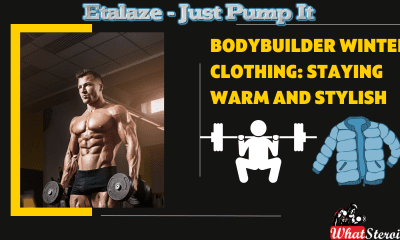
 Steroids8 months ago
Steroids8 months agoBodybuilder Winter Clothing: Staying Warm and Stylish
-
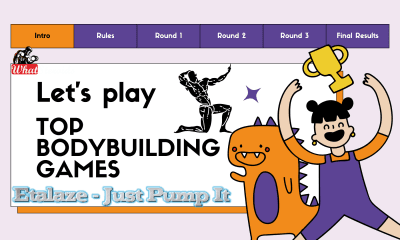
 Bodybuilding7 months ago
Bodybuilding7 months agoTop Video Games for Bodybuilders in 2025
-
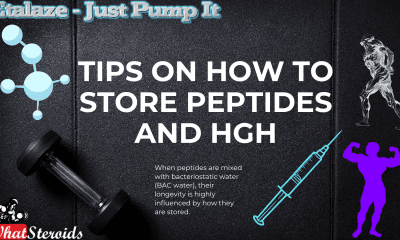
 Steroids6 months ago
Steroids6 months agoTips on How to Store Peptides and HGH
-

 Steroids5 months ago
Steroids5 months agoWhy Post-Cycle Therapy (PCT) Fails After a Nandrolone Cycle
-

 Beginners2 years ago
Beginners2 years agoTren Cycle for Beginners
-
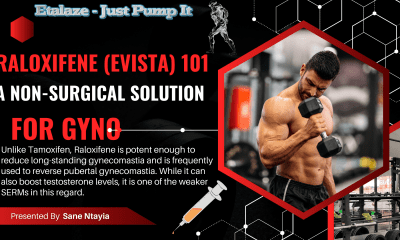
 Steroids4 months ago
Steroids4 months agoRaloxifene (Evista) 101: A Non-Surgical Solution for Gyno
-

 Anabolic Steroids2 years ago
Anabolic Steroids2 years agoLegality of Anabolic Steroids In Latin America
-
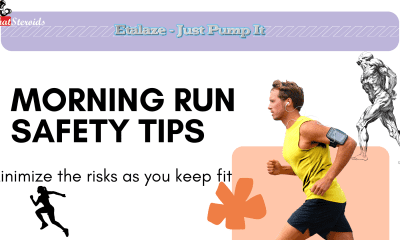
 Beginners8 months ago
Beginners8 months ago14 Morning Run Safety Tips for Bodybuilding and Fitness
-
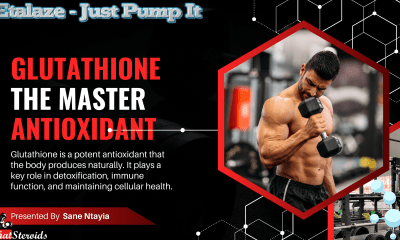
 Steroids7 months ago
Steroids7 months agoGlutathione – The Most Underrated Antioxidant
-
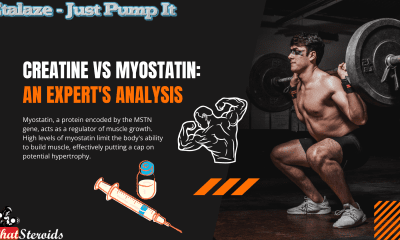
 Steroids4 months ago
Steroids4 months agoCreatine vs Myostatin: An Expert’s Analysis

